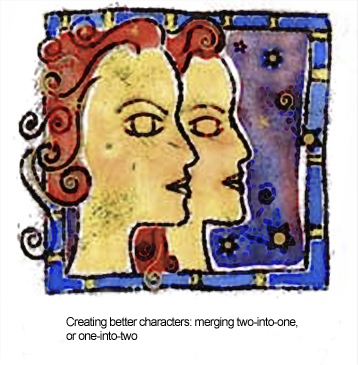 A developmental editor can help a writer find ways to add greater depth and stronger identity to characters in a story.
A developmental editor can help a writer find ways to add greater depth and stronger identity to characters in a story.
One approach combines two characters into one more complex and diverse individual, or instead, may split apart one character into two separate individuals, each representing a different aspect of the relationships in the story.
I worked on a novel recently with a young author who was writing about a single first person narrator with an older sibling. When tragedy in the form of a parent’s death struck the family, there were conflicting and oppositional responses from the two brothers, both somewhat glib and superficial. I recommended combining the two individuals, which gave the one remaining first-person narrator a broader range of options, behaviors, and feelings. That helped quite a bit in providing a single character the reader could find appealing, and easier to care about.
In the same novel, I recommended that one cloying but lovable girlfriend of the first person narrator be divided into two young women, one unfortunately annoying and ultimately rejected in favor of another who was more appealing in the long run. In this case, each half of the original was developed with more complexity and detail, so the choice between them was more nuanced and emotionally satisfying to the hero and, of course, the reader.
Two into one, or one into two. It’s a technique I’ve used in appropriate situations. You may want to try it yourself.